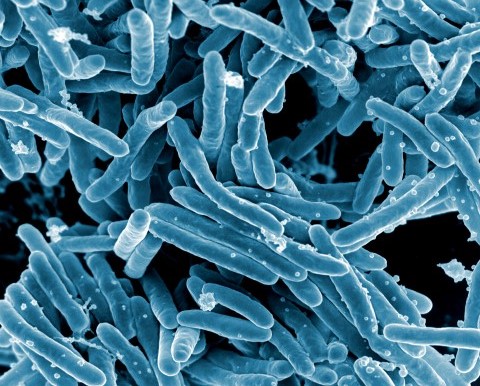 Genotyping applied to strains of Mycobacterium avium subsp. paratuberculosis (MAP) becomes an indispensable tool for epidemiological surveillance of this significant veterinary pathogen.
For MAP, the most adapted and employed techniques are based on multi-locus variable number tandem repeat analysis (MLVA) targeting 8 markers “mycobacterial interspersed repetitive units” (MIRUs) and “variable-number tandem repeats” (VNTRs) and Multilocus sequencing typing (MLST) created using 11 “Short Sequence Repeat" (SSR) markers. This standard, portable, reproducible and discriminatory typing method has the potential to be a versatile tool for the strain identification of MAP and also member of Mycobacterium avium complex MAC. Within the past 5 years a large and growing number of genotypes of strains of various origins have been identified in many laboratories, however, no web tools was available for knowing the already existing profiles and storing newly defined genotypes.
Genotyping applied to strains of Mycobacterium avium subsp. paratuberculosis (MAP) becomes an indispensable tool for epidemiological surveillance of this significant veterinary pathogen.
For MAP, the most adapted and employed techniques are based on multi-locus variable number tandem repeat analysis (MLVA) targeting 8 markers “mycobacterial interspersed repetitive units” (MIRUs) and “variable-number tandem repeats” (VNTRs) and Multilocus sequencing typing (MLST) created using 11 “Short Sequence Repeat" (SSR) markers. This standard, portable, reproducible and discriminatory typing method has the potential to be a versatile tool for the strain identification of MAP and also member of Mycobacterium avium complex MAC. Within the past 5 years a large and growing number of genotypes of strains of various origins have been identified in many laboratories, however, no web tools was available for knowing the already existing profiles and storing newly defined genotypes.
To meet this need a web application called “Mac INMV database” http://mac-inmv.tours.inra.fr was developed. This freely accessible service allows users to compare the genotyping data of their strains analysed by MLVA and MLST with those of existing reference strains.
This freely accessible database was created with genotyping data of strains of MAP and of other MAC members. This database gathers all profiles obtained in our laboratories and those published in the literature.
• The database information include species and subspecies status, incrementing profiles INMV generated by MLVA and MLSSR generated by MLST with corresponding alleles/repeat numbers at each locus, and a genotype defined by a number resulting from a numeric code.
• The user can consult and query all the existing MLVA and MLSSR profiles in order to see if profiles identified in his lab already exist. If profiles are not known, the user can request new attribution numbers online.
• All information can be exported under EXCEL or PDF format. An extensive documentation regarding the genotyping method, protocols, primer sequences, marker information, is available to the users. Users are invited to provide any comments, always welcome, to improve this database.
References used to establish this database
MAC-INMV-SSR: a web application dedicated to genotyping members of Mycobacterium avium complex (MAC) including Mycobacterium avium subspecies paratuberculosis strains. Infection, Genetics and Evolution 77:104075. [Pubmed]
• Biet F, Sevilla IA, Cochard T, Lefrancois LH, Garrido JM, Heron I, Juste RA, McLuckie J, Thibault VC, Supply P, Collins DM, Behr MA, Stevenson K. 2012.
Inter- and intra-subtype genotypic differences that differentiate Mycobacterium avium subspecies paratuberculosis strains. BMC Microbiol 12:264. [Pubmed]
• Radomski N, Thibault VC, Karoui C, de Cruz K, Cochard T, Gutierrez C, Supply P, Biet F, Boschiroli ML. 2010.
Determination of genotypic diversity of Mycobacterium avium subspecies from human and animal origins by mycobacterial interspersed repetitive-unit-variable-number tandem-repeat and IS1311 restriction fragment length polymorphism typing methods. J Clin Microbiol 48:1026-1034.[Pubmed]
• Thibault VC, Grayon M, Boschiroli ML, Willery E, Allix-Beguec C, Stevenson K, Biet F, Supply P. 2008.
Combined Multilocus Short-Sequence-Repeat and Mycobacterial Interspersed Repetitive Unit-Variable-Number Tandem-Repeat Typing of Mycobacterium avium subsp. paratuberculosis Isolates. J Clin Microbiol 46:4091-4094.[Pubmed]
• Thibault VC, Grayon M, Boschiroli ML, Hubbans C, Overduin P, Stevenson K, Gutierrez MC, Supply P, Biet F. 2007.
New variable number tandem repeat markers for typing M. avium subsp. paratuberculosis and M. avium strains: comparison with IS900 RFLP and IS1245 RFLP typing. J Clin Microbiol 45:2404-2410. [Pubmed]
• Motiwala AS, Amonsin A, Strother M, Manning EJ, Kapur V, Sreevatsan S 2004.
Molecular epidemiology of Mycobacterium avium subsp. paratuberculosis isolates recovered from wild animal species. J Clin Microbiol. 2004 Apr [Pubmed]
• Amonsin A, Li LL, Zhang Q, Bannantine JP, Motiwala AS, Sreevatsan S, Kapur V 2004.
Multilocus short sequence repeat sequencing approach for differentiating among Mycobacterium avium subsp. paratuberculosis strains. J Clin Microbiol. 2004 Apr. [Pubmed]